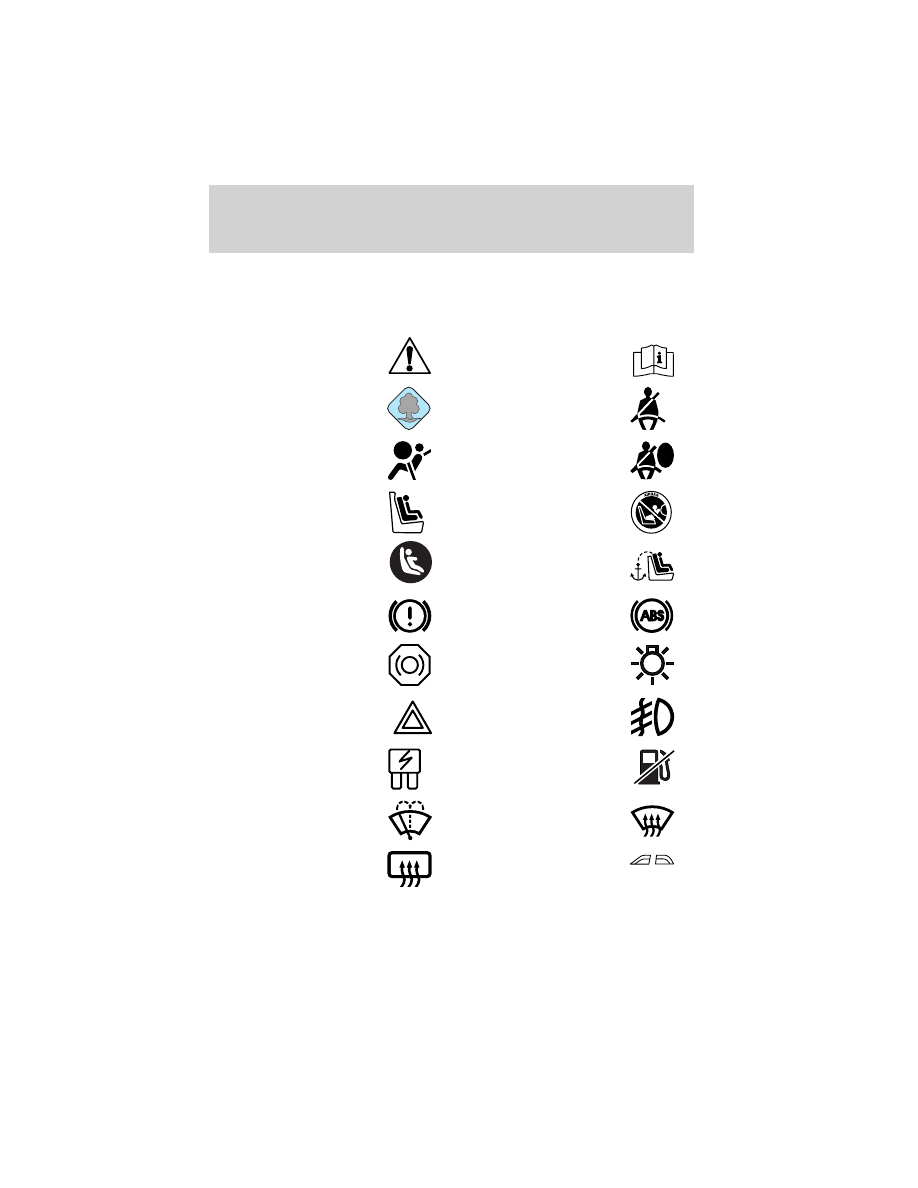Mazda B4000 4WD Truck (2004 year). Instruction - part 1

These are some of the symbols you may see on your vehicle.
Vehicle Symbol Glossary
Safety Alert
See Owner’s Guide
Protecting the
Environment
Fasten Safety Belt
Air Bag-Front
Air Bag-Side
Child Seat
Child Seat Installation
Warning
Child Seat Lower
Anchor
Child Seat Tether
Anchor
Brake System
Anti-Lock Brake System
Brake Fluid -
Non-Petroleum Based
Master Lighting Switch
Hazard Warning Flasher
Fog Lamps-Front
Fuse Compartment
Fuel Pump Reset
Windshield Wash/Wipe
Windshield
Defrost/Demist
Rear Window
Defrost/Demist
Power Windows
Introduction
8